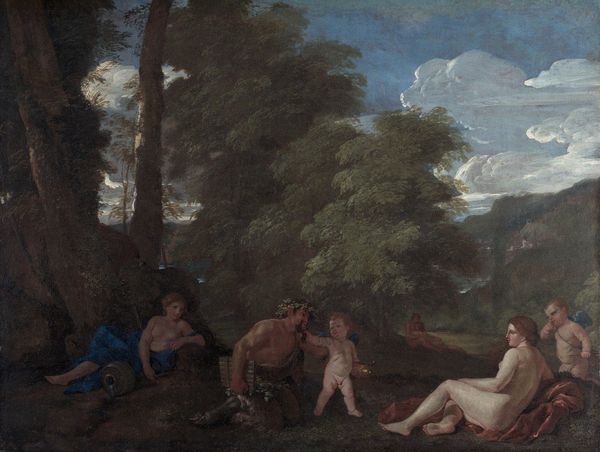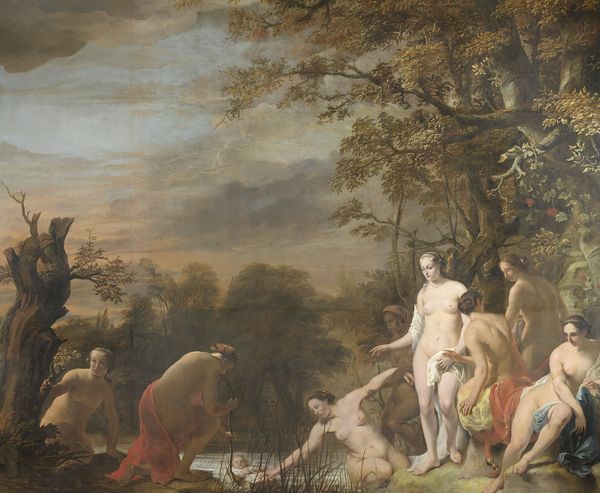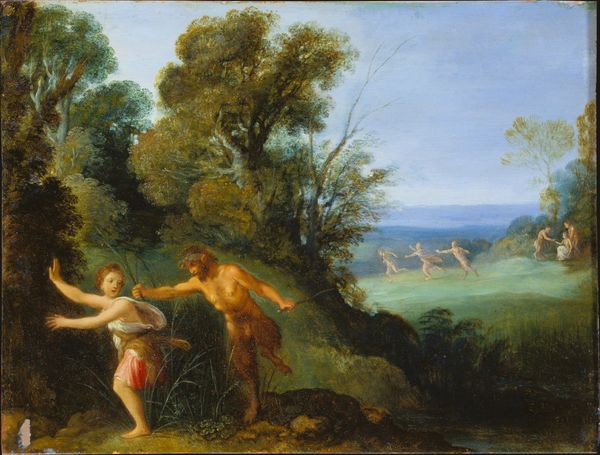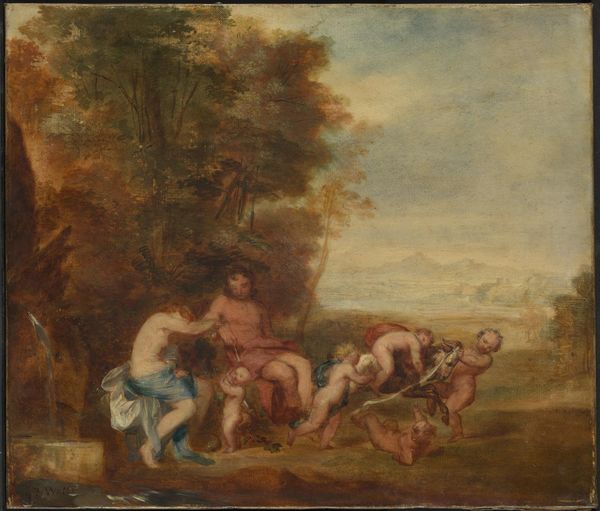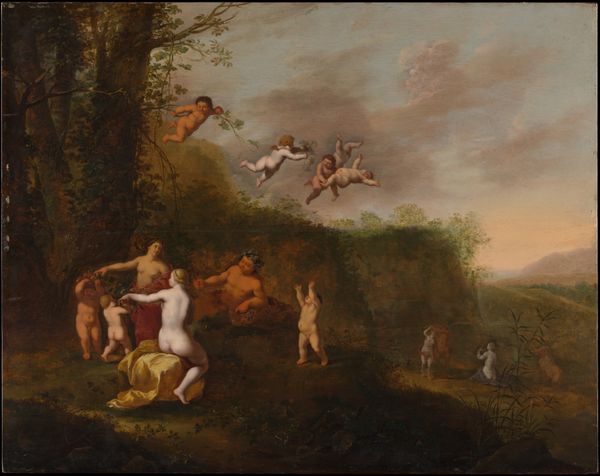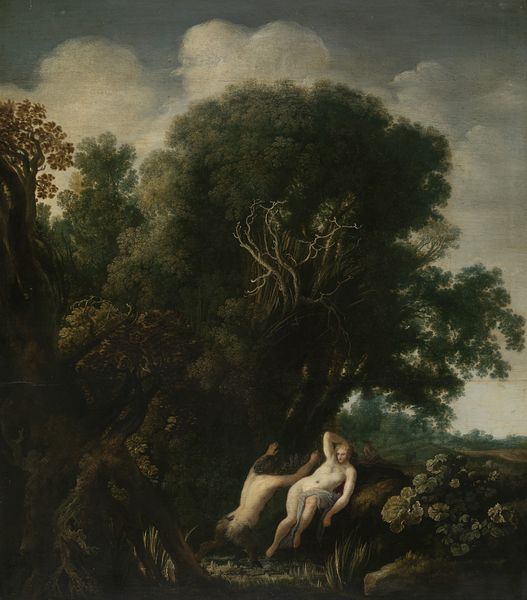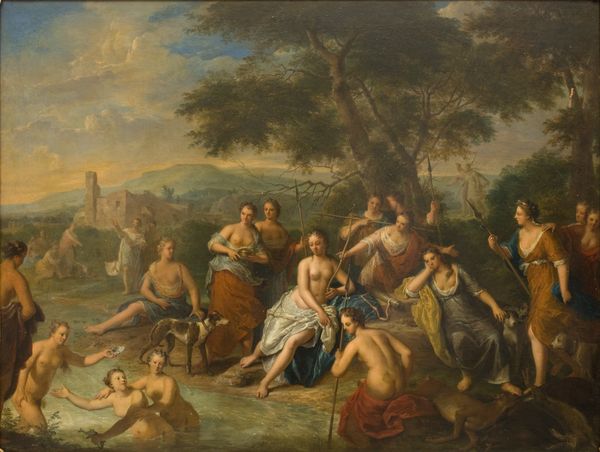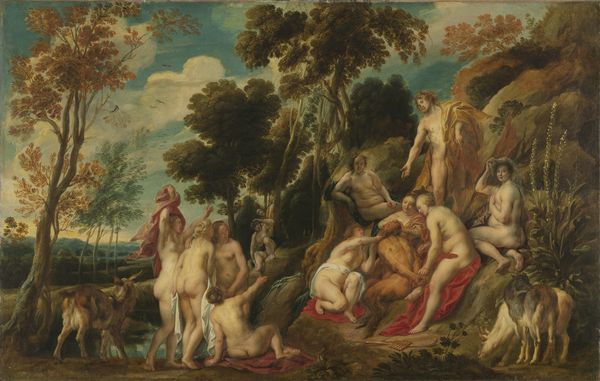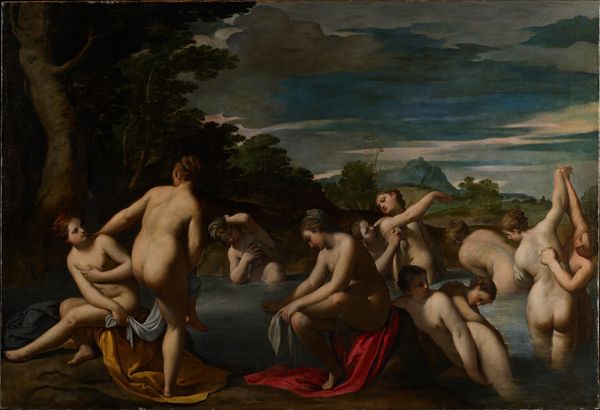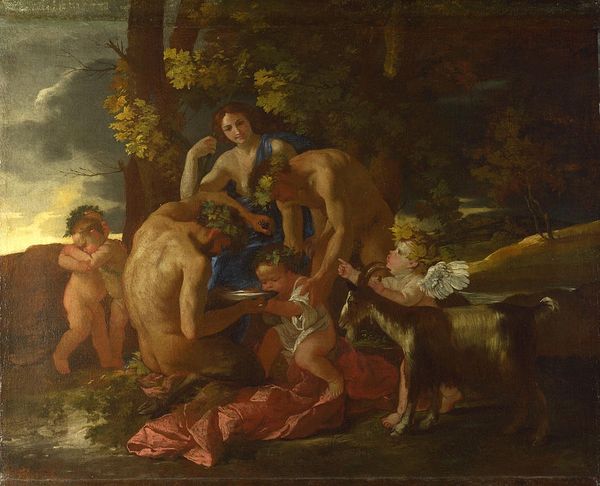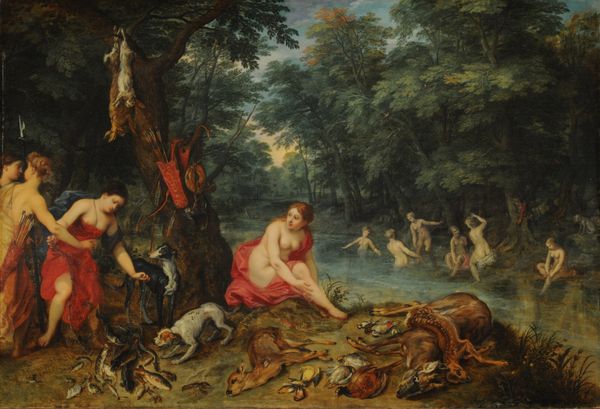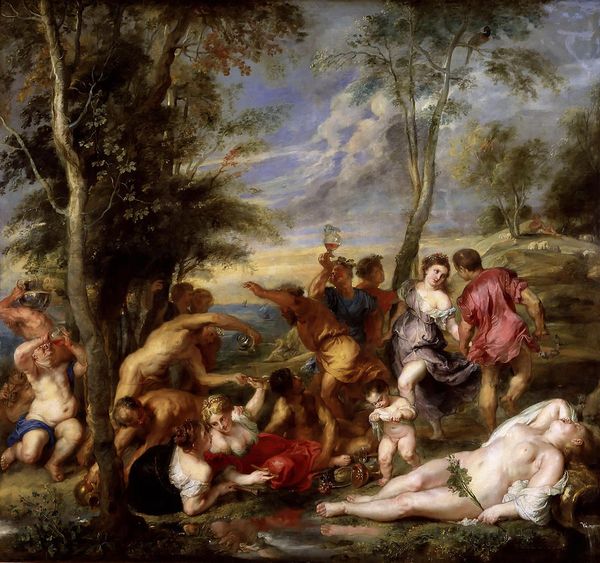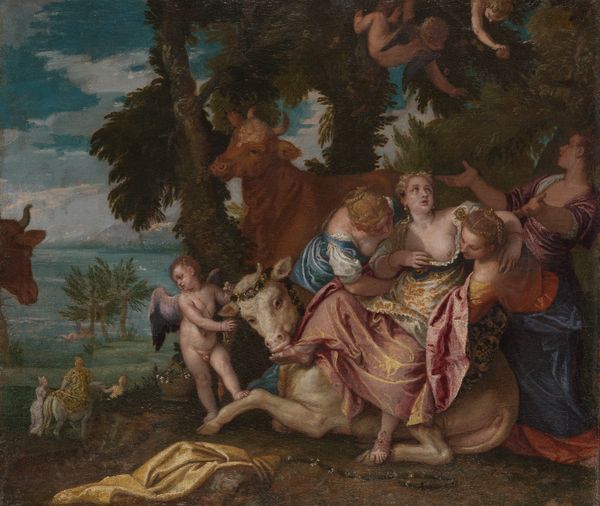
painting, oil-paint
#
allegory
#
baroque
#
painting
#
oil-paint
#
landscape
#
figuration
#
oil painting
#
genre-painting
#
nude
Dimensions: 39.2 cm (height) x 61.5 cm (width) (Netto)
Editor: This is Frans Wouters's "Venus Bewailing the Slain Adonis," painted in the 1650s, using oil paints. The atmosphere feels so heavy and mournful, emphasized by the darkness of the forest. What strikes you about this piece? Curator: The Baroque era loved drama, and this painting is no exception. But it goes beyond mere theatrics. Think about the social position of women during this period. Venus, a goddess, is depicted in intense grief, mourning Adonis. How might this be a subtle commentary on the limited avenues available for women to express their emotions, forcing even goddesses into prescribed roles of mourning? Editor: So, you're saying even a powerful figure like Venus is constrained by societal expectations in how she expresses grief? Curator: Precisely. The classical myths often provided a framework to explore contemporary social issues. Note also the contrast between Venus's active pose and the lifeless body of Adonis. Could this symbolize the active role women played within the household contrasting against their position in broader society? The very act of creating and displaying this image normalizes a perspective on traditionally accepted gender dynamics. What is normalized, after all? Editor: That's a powerful reading. I was focusing on the personal tragedy, but I see how it could also represent wider constraints placed on women. Curator: It's about expanding our understanding of visual expression as culturally relevant and insightful regarding the nuances of daily living and historical circumstance. Considering the relationship between myth, gender and social structures can unlock deeper layers of meaning in these paintings. The death of Adonis is tragic, but perhaps Wouters also uses this scene to mourn a larger societal loss: that of female agency. Editor: This makes me see the painting in an entirely different light, it's so much more layered than I initially thought. Curator: It’s in these layers we locate how the art relates directly to the artist, subject, audience and the societies in which they are enmeshed.
Comments
statensmuseumforkunst almost 2 years ago
⋮
This painting is on a panel of oak. In the 1600s oak was in short supply, so to control the trade and production of panels the carpenters’ guild in Antwerp (which included frame and panel makers) ruled that from 1617 all panels were to be stamped with the personal monogram of the carpenter. Once this had been done, an inspector from the Guild of Saint Luke came to the carpenter’s workshop to check the quality of the panels. Approved panels were then branded with Antwerp’s city arms: three towers surmounted by two hands. This is the brand that can be seen on the back of Frans Wouter’s painting. The design here was in use from 1637-1650, so the painting was probably made during this period. It is, however, strange that there is no carpenter’s stamp on this approved and branded panel. We do not know why. Such a monogram would have given us more information about when the panel was made
Join the conversation
Join millions of artists and users on Artera today and experience the ultimate creative platform.
